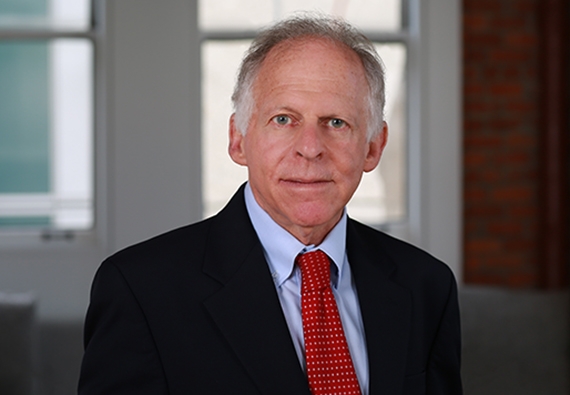San Francisco Land Use Updates
Over the past two month there have been three major changes to land use laws that will effect the future development of San Francisco. These three recent changes are summarized below.
Eastern Neighborhoods Plans: PASSED
On December 9, 2008, the Board of Supervisors passed the long-awaited Eastern Neighborhoods Area Plans establishing new zoning for the East SoMa, Mission, Showplace Square/Potrero Hill, and Central Waterfront neighborhoods. In the works for the last seven years, these Plans will guide future development of a major and dynamic portion of the city for years to come.
At the core of these Plans is the city's urban design vision of creating "cohesive, engaging, walkable, and green," neighborhoods (the Plans anticipate some 7,500 - 10,000 new housing units over the next 20 years) while preserving sufficient space for light industrial uses. To that end, the Plans rezone almost half of the industrially zoned areas in the Eastern Neighborhoods mixed-use while rezoning the remainder for industrial-only uses.
New Use Districts: To balance the need for jobs and housing, the Plans create several new zoning districts while adding and modifying some existing zones across the four neighborhoods. (The new zones generally replace the current industrial M-1, M-2, and C-M zones.)
- PDR (Production Distribution and Repair) Zones - light industry, integrated PDR/office, design, arts/performance, and limited retail and office uses.
- UMU (Urban Mixed Use) Zone - higher density housing, smaller-scale retail and commercial, PDR-type uses compatible with residential.
- MU (Mixed-Use) Zones - high-density housing to take advantage of transit proximity, neighborhood-serving retail and commercial, and offices in the MUO and MUG zones.
The Plans envision the UMU and other new mixed-use zones as a dynamic multi-use buffer between the new PDR zones, which preserve space for traditional light-industrial activities and the existing neighborhood residential areas which, for the most part, remain zoned for residences only. Pre-existing uses in the new PDR and mixed-use zones are grandfathered (and some established in the past without permits can even be "legitimized") and can be enlarged by up to 25%.
Height Limits: While the Plans mostly leave the existing 40 to 50 foot height limits in place, there are targeted increases up to 68 and 85 feet (e.g., along major arterials and in Showplace Square and the Central Waterfront) and the height for a limited number of parcels was decreased.
Residential Density: Throughout the Eastern Neighborhoods, the Plans have generally eliminated residential density limits. And, as in other newly rezoned parts of the city, the Plans hopes to encourage the creation of new family housing by generally requiring developments to provide either 40% two-bedroom units, 30% three-bedroom units, or 20% all-affordable two- and three-bedroom units.
Parking: Consistent with the city's transit initiatives, the Plans generally eliminate parking minimums and replace them with new parking maximums.
New Fees & Affordable Housing: The Plans include a Community Improvement Fee in order to raise funds for infrastructure improvements associated with anticipated new development in the Eastern Neighborhoods. Depending on the size, location, and type of a project the fees range from $6 - $16 per gross square foot. The Plans also increase inclusionary housing requirements in the UMU district only: 18% - 22% onsite (15% - 19% for long-term rentals) and 23% - 27% off-site -- but offer more compliance options in addition to that of an in lieu fee.
Entitlements: The Plans offer the hope of a faster entitlement process by permitting more uses as-of-right (thus eliminating the need for most conditional use approvals) and by requiring Planning Commission design review approval only for "Large Projects" (more than 25,000 sq.-ft., above 75 ft. height, or more than 200 ft. of street frontage). Similarly, for projects that can take advantage of the new Community Plan Exemptions (see below), CEQA processing should be significantly easier.
Prop. J (Historic Preservation Commission): PASSED
The voters on November 4, 2008, enacted Proposition J to establish a Historic Preservation Commission (HPC), which will have independent authority over City landmarks, significant and contributory downtown buildings, and structures in locally designated historic districts. The prior Landmarks Preservation Advisory Board, which was advisory only to the Planning Commission and Department, was eliminated.
On December 9, outgoing Board of Supervisors President Aaron Peskin, the author of Proposition J, introduced a wholesale redraft of Planning Code provisions relative to historic preservation to further empower the HPC and reduce the Planning Commission's jurisdiction over land use decision-making that impacts historic resources. Mayor Newsom is expected to introduce competing legislation that would retain a balance of authority between the two commissions, and he has also nominated seven members to the new HPC, each of whose nomination must be affirmed by the Board of Supervisors.
NEW: Community Plan CEQA Exemptions
With the approval of the Rincon Hill Plan, the Market and Octavia Plan and, now, the Eastern Neighborhoods Plans (and certification of accompanying Plan EIRs), the Planning Department has unveiled a new procedure and fee structure for projects consistent with those plans -the Community Plan Exemption/Exclusion. Although all environmental review starts with a new single application form, the Community Plan Exemption should provide a faster CEQA approval path for infill projects which are "consistent with" a Plan for which program level EIR has already been certified.


